
Image courtesy of NASA/JPL
Titan is the second largest moon in our solar system (smaller only than Jupiter's Ganymede), and it is the only moon in the solar system with a substantial atmosphere. Its atmosphere is roughly 1.5 times thicker that of the Earth's, and it is also made of Nitrogen, like the Earth's. It is a lot colder, though, so rather than having a water cycle, Titan has a methane cycle. This means that there may be solid, liquid, and gaseous methane all existing on Titan. Titan's atmosphere contains many complex organic hydrocarbons, which the Earth also contains. We believe that these hydrocarbons were the building blocks for life and the formation of DNA (on Earth), thus their presence on Titan is extremely tantalizing.

Image courtesy of NASA/JPL
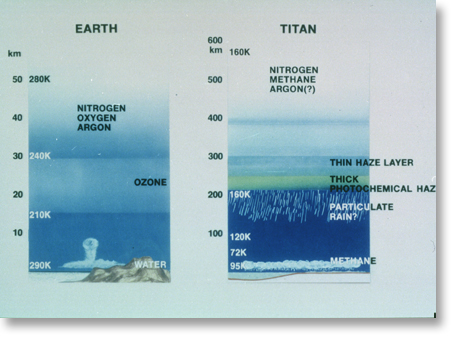
Image courtesy of NASA/JPL
Titan was first explored with the Voyager spacecraft in 1980 and 1981, but the imaging cameras on board the spacecraft could not penetrate through Titan's thick haze (like the smog in Los Angeles, but much thicker!). Recent infrared images taken with the Hubble Space Telescope have been able to see through the haze to Titan's surface, and we see bright and dark continent-sized areas. Are these continents? Mountains? Seas? Oceans? We do not know yet.
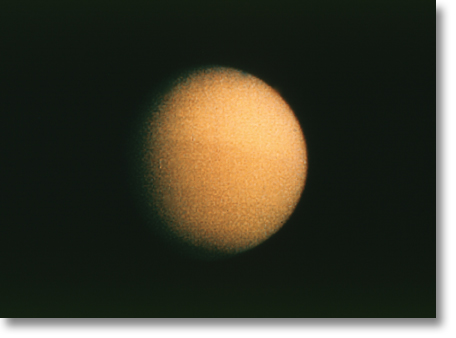
Image from Voyager spacecraft, courtesy of NASA/JPL

Image from Hubble Space Telescope
The Cassini spacecraft will arrive at Saturn in July 2004, and will drop a probe into Titan's atmosphere at the end of 2004. With the probe information as well as the orbiter's radar system, we will finally have an opportunity to see what is below Titan's clouds and hazes.
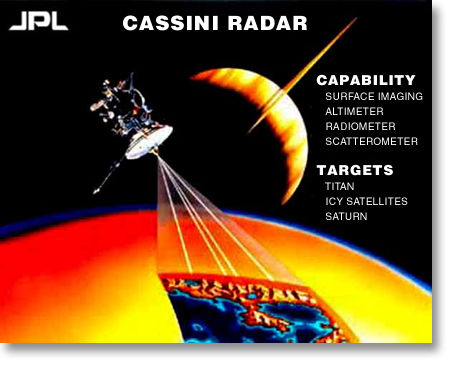
Image courtesy of NASA/JPL
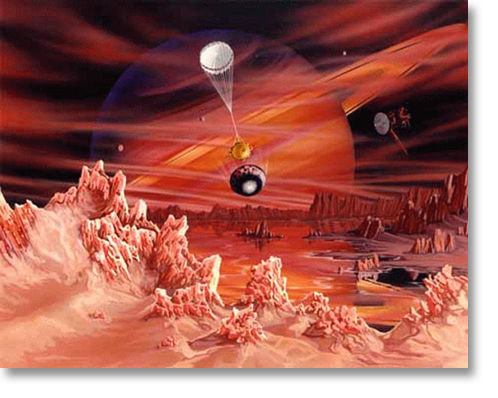
Image courtesy of NASA/JPL
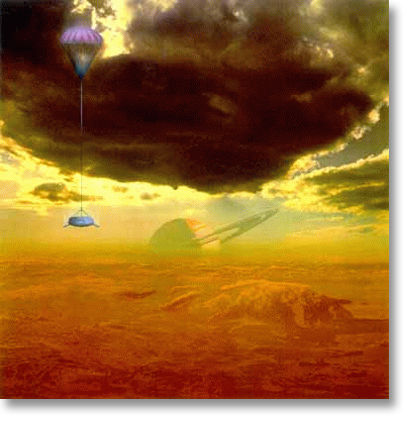
Image courtesy of NASA/JPL
Triton is Neptune's only large moon, and it is an excellent example of the "ice geology" that we believe occurs in the outer solar system, where ice takes the place of rock in the role in geology.
Triton orbits Neptune in the retrograde, or backwards, direction. This suggests that it did not form near Neptune at the time of the solar system formation. Rather, it probably formed elsewhere, beyond the orbit of Neptune, and was captured by Neptune's gravity as it passed nearby. Like Uranus, Triton is also orbiting on its side, with the north and south poles alternating in direct sunlight. When the Voyager 2 spacecraft went by in 1989, Triton's south pole was in sunlight.

Image courtesy of NASA/JPL
Triton's surface contains very few impact craters, indicating that its surface is very young. It has evidence of a wrinkled surface (the so-called "canteloupe terrain"), indicating perhaps evidence of past tectonic activity. It also has refreshed surface areas like the lunar maria, indicating possible ice/slush flooding in the past. Finally, it has dark streaked areas that are thought to be due to eruptive geysers, which spew liquid nitrogen and methane from below Triton's surface. These are known as ice volcanoes.

Image courtesy of NASA/JPL

Image courtesy of NASA/JPL

Image courtesy of NASA/JPL
In addition to the large number of moons that orbit each of the four giant planets (Jupiter currently has 63, Saturn has 31, Uranus has 27, and Neptune has 13), there is also dust, ice, and rock debris that orbit each of the four gas giants. These materials make up the rings of these planets.
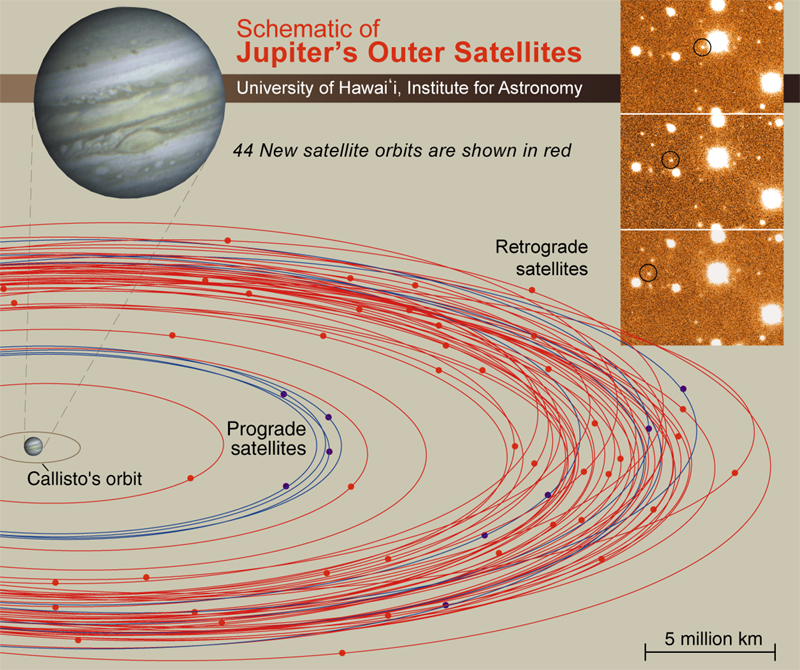
Image from http://www.ifa.hawaii.edu/%7Esheppard/satellites/.
Jupiter's ring is made almost entirely of dust. It is very thin and dark, so it is difficult to see except in certain lighting conditions.

Image from Galileo spacecraft.
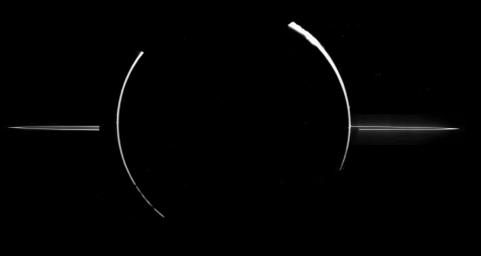
Image from Galileo spacecraft.
Saturn's ring system is the most extensive. It is made of millions of fragments of water ice (and rock), all orbiting Saturn. It extremely vast, but also extremely thin. [Scale model of 1 km across, thickness of a piece of paper.] The rings are "held in place" by small satellites that orbit Saturn near the rings. The gravitational influence of these "shepherd moons" keeps the rings in line.
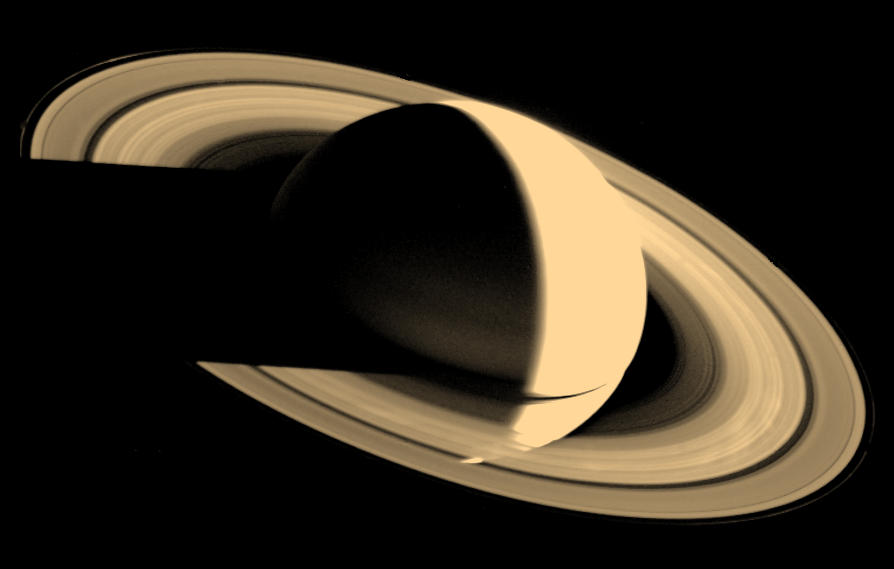
Image from Voyager 1 spacecraft.
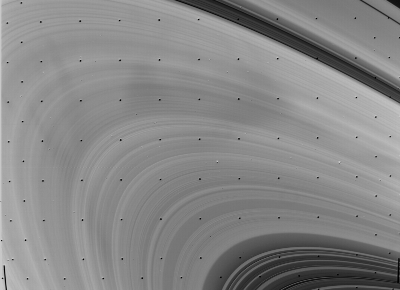
Image from Voyager 2 spacecraft.

Image from Voyager 2 spacecraft.
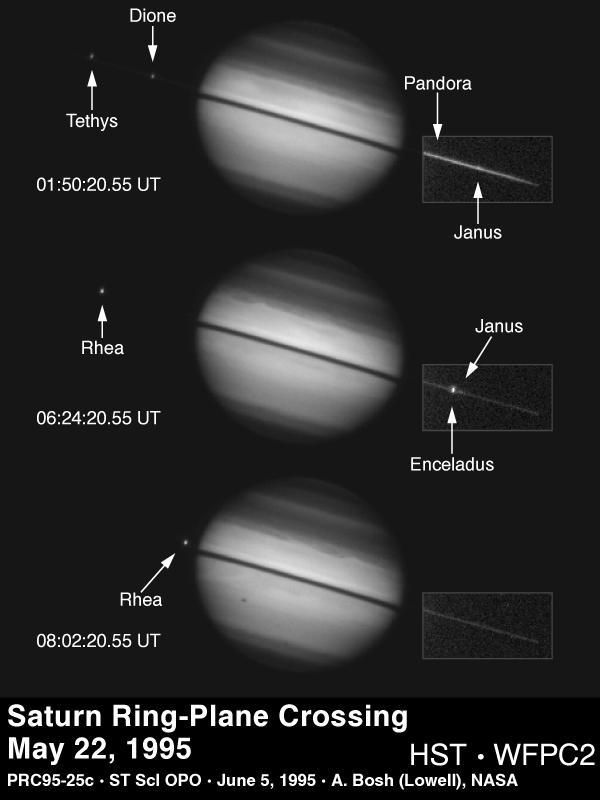
Image from the Hubble Space Telescope.
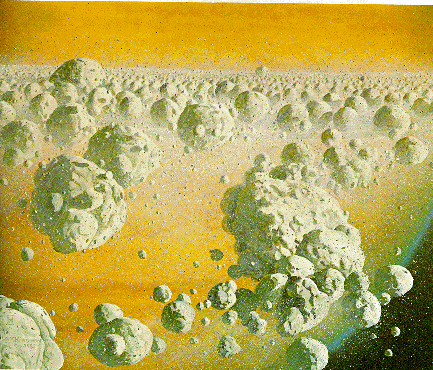
Uranus' rings are narrow and dark in color. They are difficult to see from the Earth for this reason.

Image from Voyager 2 spacecraft.
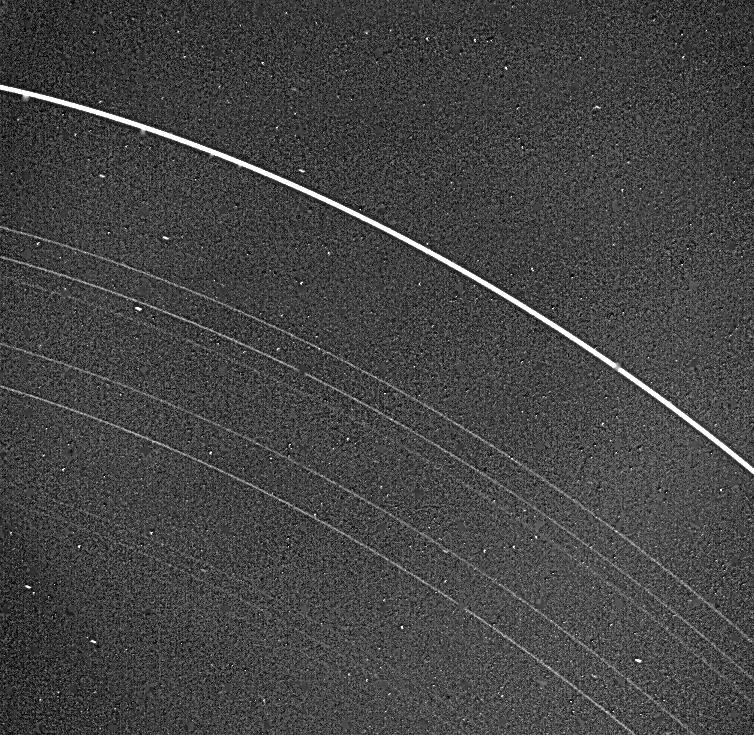
Image from Voyager 2 spacecraft.
Neptune's rings are similar to those of Uranus, but even thinner. They have uneven distributions of particles, which is still not well-understood.
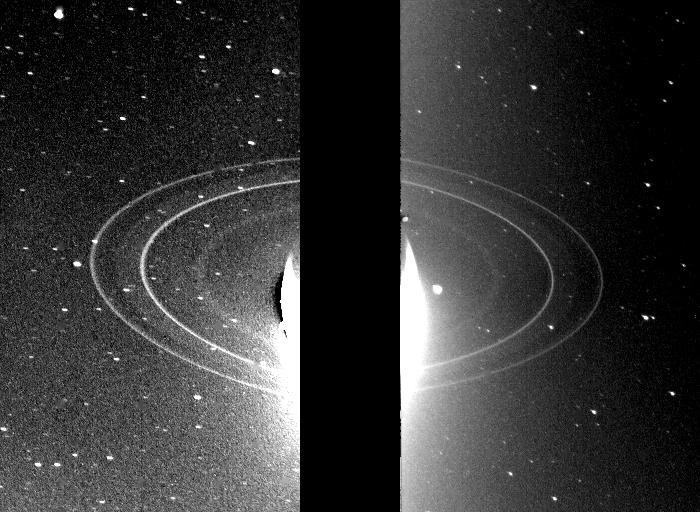
Image from Voyager 2 spacecraft.
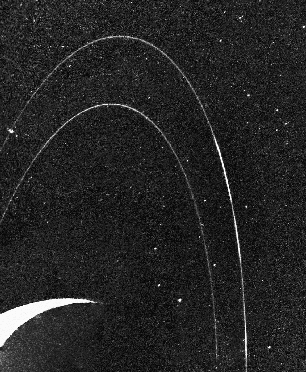
Image from Voyager 2 spacecraft.
The origin of the planetary rings is under debate. One possibility is that they are remnants of satellites (moons) that broke apart by a collision with a large asteroid or comet. The tidal forces due to Saturn and the other moons may have prevented the particles from coalescing back into a satellite, and they dispersed into a disk. The other idea is that they are a "failed satellite," meaning that the particles were never able to come together to form a satellite in the first place. The gravity of the planet (and tidal forces on the particles) is an extremely important factor in either hypothesis.